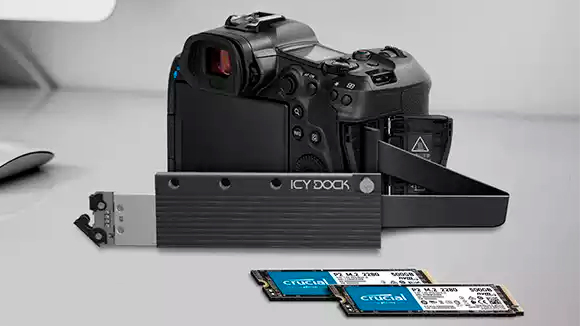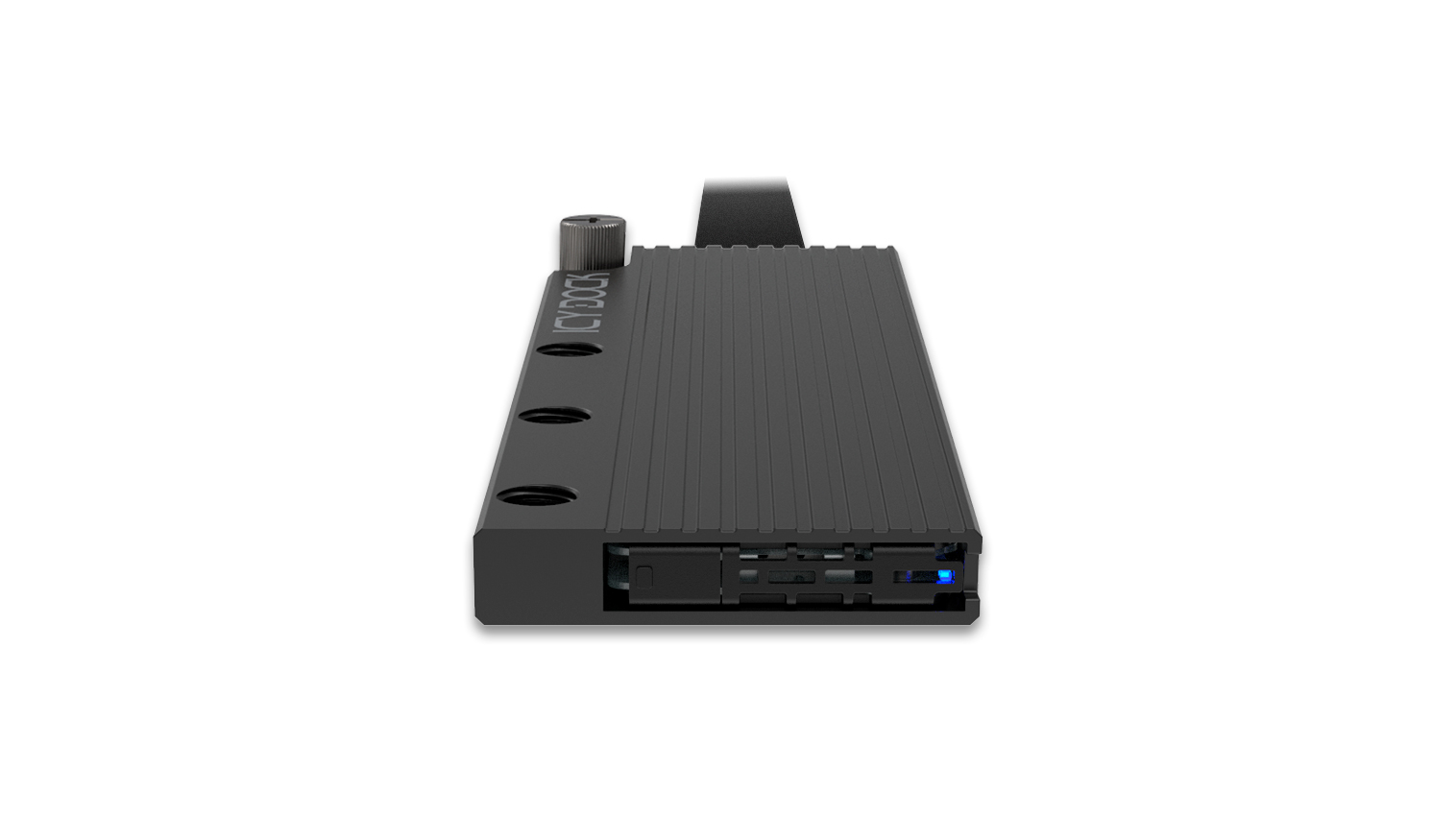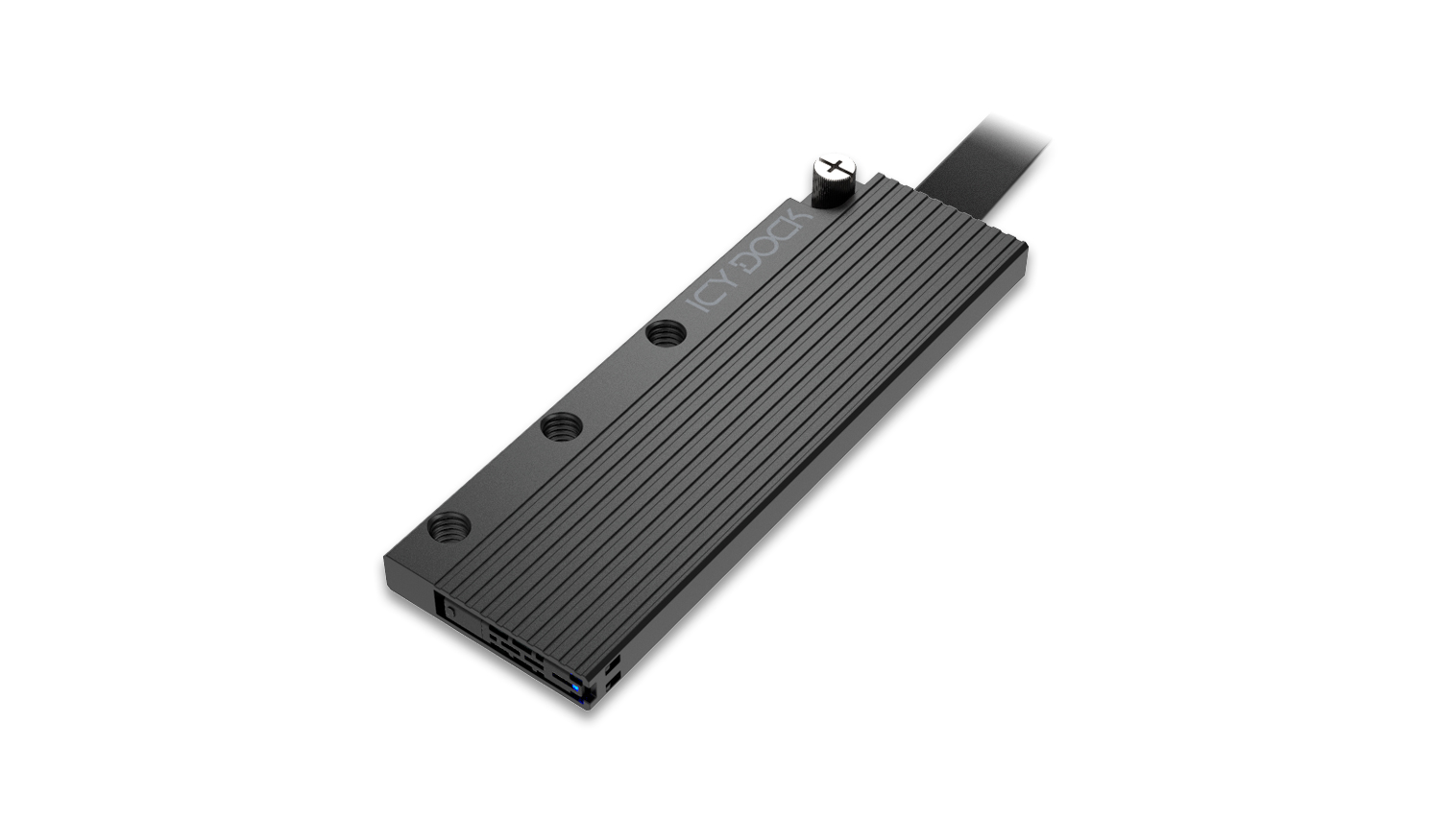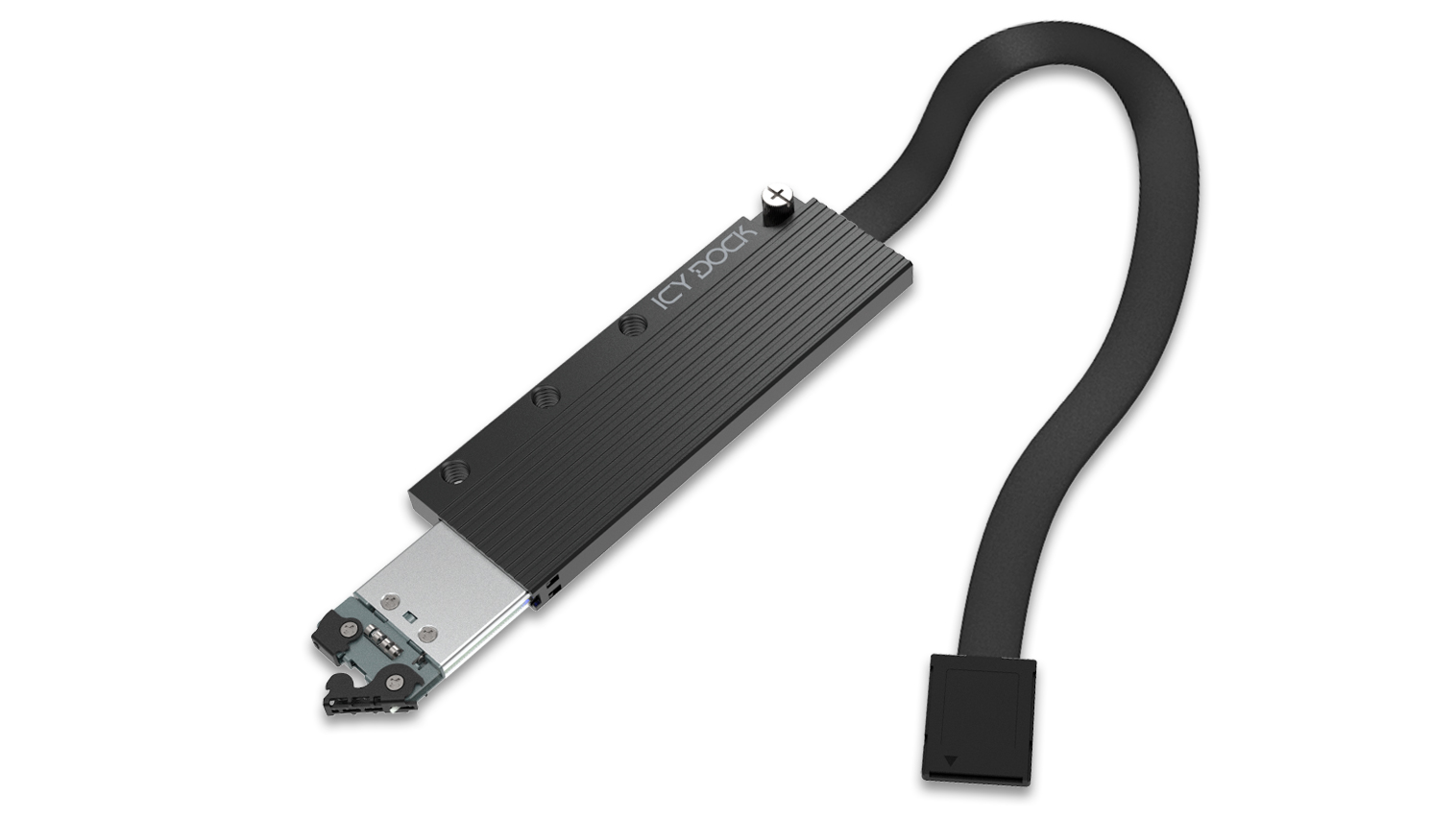
Ever wish you could use the best SSDs with your DSLR camera or camcorder? Icy Dock introduced the CP130, a neat adapter that serves as a converter for DSLR cameras and camcorders to tap into the performance on M.2 NVMe SSDs through the CFExpress slot.
The CP130 measures 55 x 130 x 20mm so it won't get in the way during your photoshoots. Icy Dock manufactures the CP130 with durable plastic to keep the weight around 300g. Unfortunately, it's only available in black but effortlessly blends in with any modern DSLR camera on the market. The CP130 features a standard built-in 1/4" quick-release camera screw so you can mount the adapter on the DSLR camera, camcorder, tripod, or other mounting brackets. It isn't limited to 1/4" mounting either as the adapter comes with 1/4" to 3/8" reducer bushing to broaden the mounting options.
Icy Dock opted for a tools-free design on the CP130, so you don't have to haul around a screwdriver. Instead, a simple locking mechanism holds the removable M.2 SSD tray in place. As a result, you can swap between SSDs with ease. The tray features an aluminum heatsink with a thermal pad to help with heat dissipation. In addition, the adapter has a handy activity LED indicator, so you'll know when the attached M.2 SSD is working or idling.
Icy Dock has built a small ecosystem with its products. As a result, the CP130's drive tray is compatible with Icy Dock's EZ-Adapter MB104U-1SMB. So you can quickly plug your M.2 SSD into the adapter and grab all the photographs or videos you took.






The CP130 is compatible with M.2 drives with 2230, 2242, 2260, 2280, and 22110 form factors. It connects to your DLSR or camcorder via a CFexpress Type B slot. The interface provides a PCIe 3.0 x2 connection, limiting transfer speeds to 16 Gbps. Unfortunately, you won't be able to unlock the full performance of a PCIe 3.0 x4 SSD. There are already high-speed microSD and CFexpress cards out there. Now that PCIe 4.0 and PCIe 5.0 SSDs are on the market, the pricing for PCIe 3.0 SSD has improved substantially. In most cases, PCIe 3.0 drivers are cheaper than CFexpress cards, and you get access to higher capacities with the former at lower prices.
According to Icy Dock, the CP130 is compatible with the Canon EOS R3, R5, 1DX, C300 Mark III, and C500 Mark II. It also supports the Nikon Z9, Z7II, D500, and D850, as well as the Fujifilm X-H2S and Panasonic Lumix GH6. Nonetheless, the CP130 should work with any DSLR/MILC camera and camcorders as long as they have a CFexpress Type B slot.
Icy Dock hasn't revealed the availability or pricing for the CP130. However, competing products are selling for $210 on Amazon, so the CP310 could retail for around the $200 price range.
Get Tom's Hardware's best news and in-depth reviews, straight to your inbox.

Zhiye Liu is a news editor and memory reviewer at Tom’s Hardware. Although he loves everything that’s hardware, he has a soft spot for CPUs, GPUs, and RAM.
-
Soaptrail So the justification is that it is cheaper than Compact Flash? That is a poor reason to add something that sticks out, breaking any weather proofing as well as add potential to break the camera storage door and/or slot.Reply
OP think you mean drives not drivers:
In most cases, PCIe 3.0 drivers are cheaper than CFexpress cards, and you get access to higher capacities with the former at lower prices.
-
edzieba Reply
CFexpress, not Compact Flash. Two different form factors, two different interfaces.Soaptrail said:So the justification is that it is cheaper than Compact Flash? That is a poor reason to add something that sticks out, breaking any weather proofing as well as add potential to break the camera storage door and/or slot.
OP think you mean drives not drivers:
'Sticking out with the flaps open' is the standard operating condition for DSLRs (rare nowadays), MILCs and prosumer ILC video cameras (e.g. Sony FX3, Sigma FP, the ubiquitous BMPCCs), used for video recording. These are operated within a cage with a pile of miscellaneous equipment bristling from it such as external battery power, mics, video monitors, recorders, etc. Adding an extra mount for an SSD cage is not a major burden, and if it allows slapping in a series of inexpensive 2TB m.2 SSDs that perform just as well as a $1000+ CFExpress card (or 8TB SSDs that have no CFExpres equivalent) then it could be very attractive indeed.